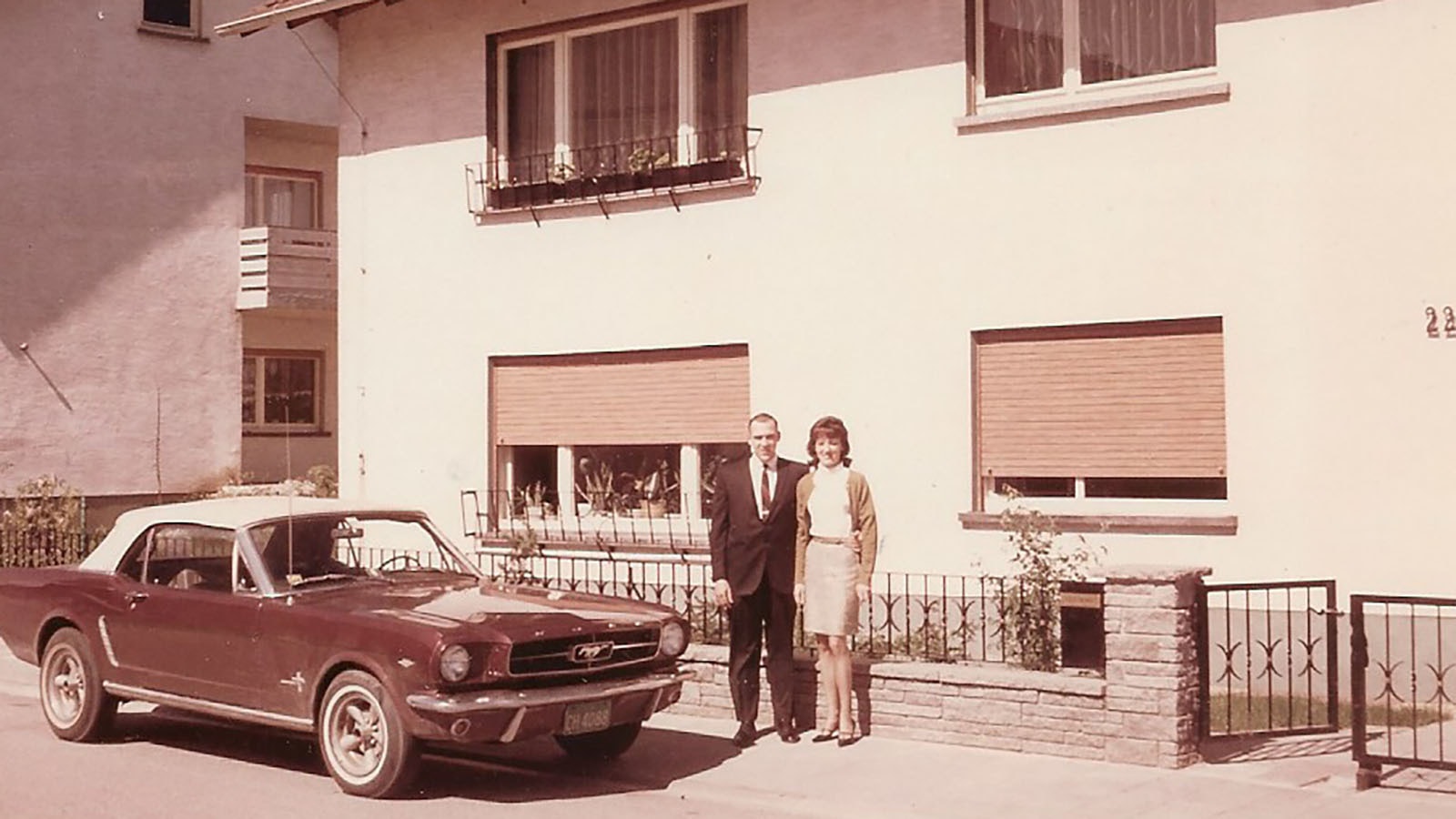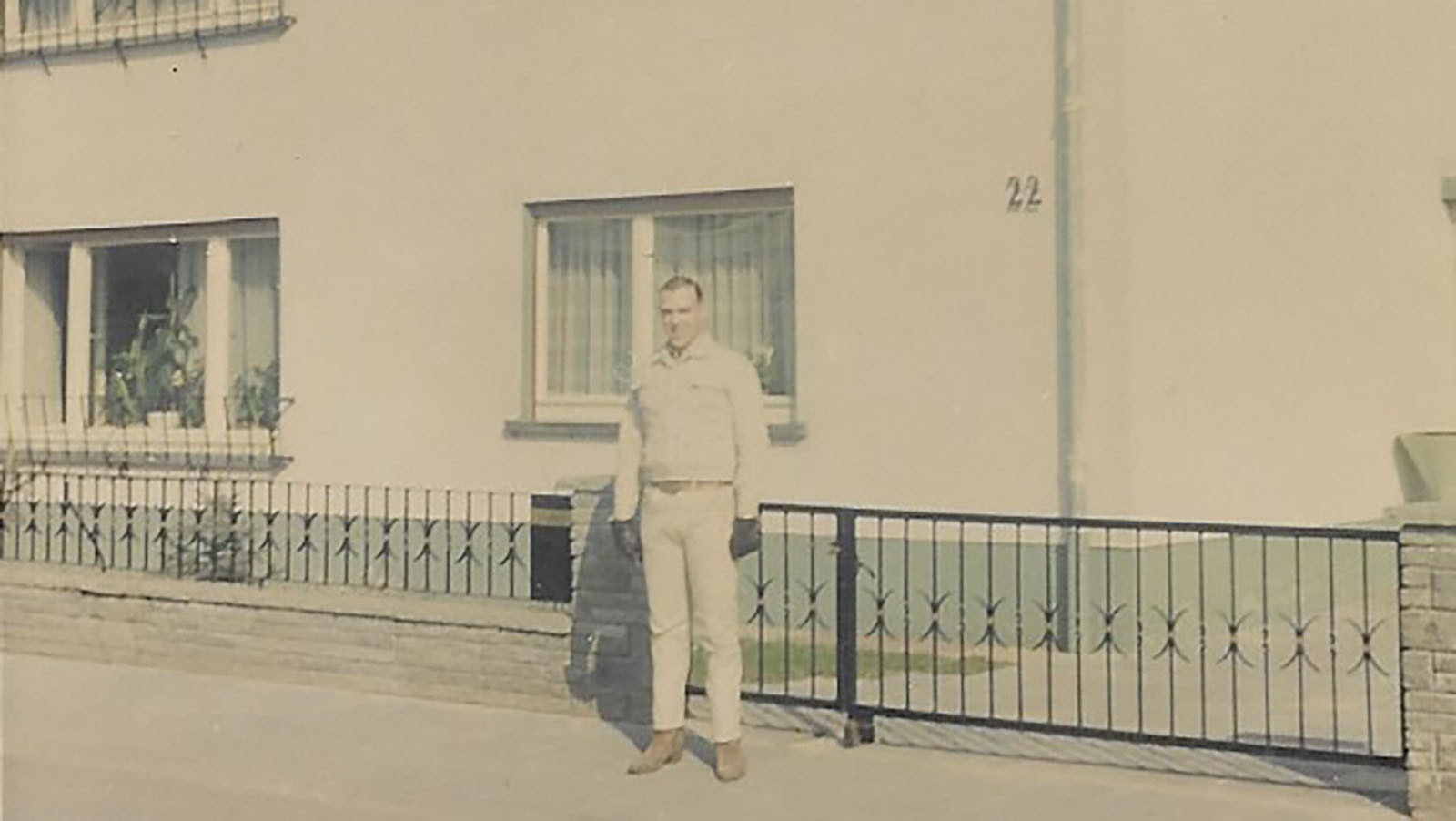Larrie Hellie, a Montana cowboy, has seen 50-year mortgages long before the Trump administration floated the idea on Truth Social earlier this month.
Hellie saw them when he was stationed in West Germany in the 1960s. They were commonplace at that time and likely necessary given the damage the country experienced during the war.
“When you participate in war, you see the outcome,” said Hellie, a Cowboy State Daily reader. “Some of those places (in Germany), Dresden being one of them, were absolutely annihilated. There was nothing left standing.”
Materials were expensive and jobs were scarce for decades after that. Multi-generational mortgages allowed families to create a better future, with a home that could be passed down, tax-free, to their grandchildren.
“Usually, it was the father, oldest son and oldest grandson who signed the mortgage,” he said. “The father (later grandfather) lived on the first floor, the oldest son lived on the second floor, and the youngest or grandson lived on the third floor.”
The floors were self-contained, with their own small kitchens, living rooms, and a couple of small bedrooms and a bathroom, wedged between. The floors typically also had their own staircases, independent of other floors, to get in and out of the house.
If a family didn’t need one of the floors, it could be rented to someone else, providing an income stream that helped the family with its mortgage.
Hellie rented such a floor from one family, in a three-floor house. Two brothers, who’d signed a 50-year loan with their father, lived on the other two floors. The father, meanwhile, lived in a nearby guest house.
“They weren’t cosigners, which we do here,” Hellie said. “They were signed on to the mortgage as a mortgagee. So, they had the same obligation as if they were buying the house themselves.”
By pooling their resources, the family was able to build a much larger home than they otherwise could have afforded. It also created revenue opportunities, such as renting out one floor, to help pay for the mortgage.
And since everyone was an owner, the property was immediately transferable on death, without having to pay estate taxes.
Japan Has Had 100-Year Mortgages
Germany isn’t the only country to have experimented with multi-generational loans.
Wyoming Mortgage Advisors owner, Rich Gibbs, said other places in Japan and the UK have had them in the past as well.
“Japan has 100-year mortgages,” Gibbs said. “Isn’t that crazy?”
Part of the issue there, Gibbs said, is limited space for housing, which has driven more families to stay together, instead of buying their own places. That dynamic is especially keen in Japan, but it’s true to a certain degree in many European countries as well.
“The housing stocks there are lower, so you have more generational people living in a home,” he said. “Europe and Japan and places like that will have multiple levels of people — grandparents, great-grandparents, all the way down the line — living in one home just because of housing stock and overall costs.”
America, compared to crowded European countries and island nations like Japan, still has comparatively cheap housing, Gibbs added, though it may not seem like it to first-time homebuyers in America.
Problems were particularly acute, though in Germany after World War II. The things needed to build or rebuild homes were hard to come by for decades.
“You had a lot of homeless people at that point, too, where a lot of houses were destroyed, things along that line,” he said. Trying to get things rebuilt was very difficult. So incentivizing people to stay together and stay in one home was critical as well.”
Not Unheard Of In America
Fifty-year mortgages are not completely unknown in America, Gibbs added.
“There are some non-standard, 50-year mortgages here,” he said. “You just don’t see them very often.”
Those types of loans are special cases, and don’t go through Fannie Mae or Freddie Mac.
“Those are usually done by private investors,” Gibbs said. “You’re not going to get a 6% rate … There’s also a very high likelihood that you’re going to have some kind of balloon on it, too.”
A balloon loan refers to a type of loan with smaller monthly payments through most of the loan’s term, followed by one, large final payment.
Typically, they’re not bank-secured loans, either.
“When the 50-year loan came up, the idea that Trump started floating, I actually went out and did a little quick research,” Gibbs said. “I already knew about Germany and Japan. There’s some stuff in the UK, too. But there are private investors out there doing those. And these companies that are doing those in Japan and the UK … they could lend here, too, if they had an appetite to do it.”
One thing Gibbs has seen more commonly in the United States, however, are what he calls jumbo loans that are spread over a 40-year term.
“So, they’re the larger (home) loans over here in Cheyenne, and it’s over $800,000,” he said. “(They’re) doing those through, that’s not a Fannie-Freddie guaranteed loan. They’re through large private companies that do mortgages and they sell these things off on Wall Street all the time.”
When It Could Make Sense
America’s housing shortage does have some of the same hallmarks to it that other housing-short markets that have tried 50-year loans faced.
“They had cost pressures. They had supply pressures, things along that line,” Gibbs said. “We have a lot of that right now, too. We just had a couple of years ago where we had such a huge housing shortage and still do. So that kind of falls into the same stuff that happened after World War II. That’s why we’re looking at something like this now and again.”
While it is true that the interest paid on such a term is much greater, Gibbs believes the idea can makes sense in some scenarios. For one thing, every dollar a consumer can save in the present is a dollar that can do other work for them and their families.
“If you could barely qualify for a 30-year-loan, but you go to a 50, and it creates a little additional cash flow, you can start investing that and making your money work better for you,” he explained. “Especially with the way compounding happens. You know, every eight, nine years your money doubles in the stock market.”
A return of 8% is fairly typical over a long haul for the stock market, Gibbs said.
“So, every eight years, you can double your money,” he said. “That first dollar in has real impact. And worst-case scenario, it allows you to have a little bit of a rainy-day fund.”
While multigenerational living hasn’t been huge in American culture, Gibbs has seen some families give the idea a try, and there are some advantages for those families who get along with each other.
“I had a transaction that just closed a couple of weeks ago where it’s a father and his daughter and daughter’s husband,” he said. “They’ve lived together for years.”
With the money they saved by pooling their resources, they were recently able to buy a much larger home and are now renting out their old home.
“Everyone’s kind of split the bills and now they’ve gotten to a position where they can create more cash flow for themselves,” Gibbs said. “Because they’re all living under one house. And it seems to work really well for them. They do really well together. They’re a family that stays together and plays together.”
Renée Jean can be reached at renee@cowboystatedaily.com.









